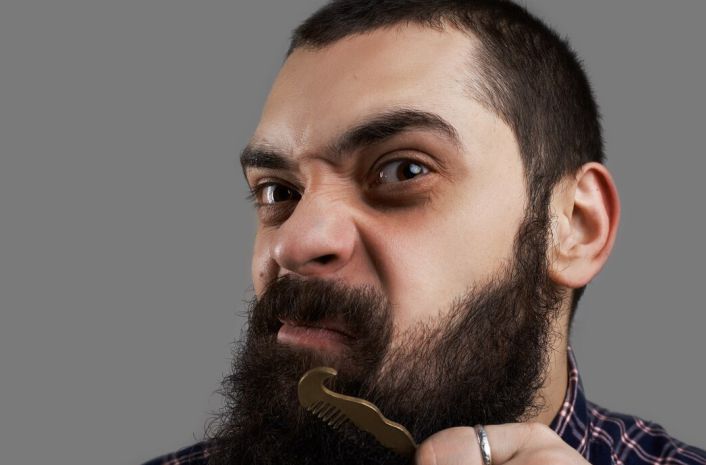Last updated on November 14th, 2025 at 05:50 pm
Explore the ultimate guide to facial hair and beard styles, grooming techniques, and maintenance tips. Everything you need to know for a well-defined, stylish look.
Men’s facial hair and beard have become a key component of men’s grooming that defines your look and reflects your personality.
Whether you prefer a rugged beard, a sharp mustache, or clean stubble, your grooming choices make a statement.
Some grow a beard for a bold, masculine appearance, while others keep it neatly trimmed for a polished style.
Across cultures, facial hair and beard carry meaning: a thick beard may symbolize strength, while a styled mustache can add distinction. Trends shift, but men’s beards and facial hair remain central to grooming.
This guide covers everything: facial hair – beard styles, beard care, mustache shaping, sideburn maintenance, stubble care, and shaving techniques.
Whether growing your first beard or refining your look, you’ll find expert tips to keep your facial hair well-groomed and suited to your style.
Related: Beard Styles for Older Men
Key Takeaways
- Facial hair and beard vary in thickness, texture, and style, influenced by genetics, hormones, age, and personal grooming preferences.
- Regular grooming and maintenance are crucial to keeping facial hair healthy, defined, and looking its best.
- Beards offer confidence, protect skin, improve facial structure, and reduce acne, while also saving time on shaving.
- Choosing the right facial hair style depends on face shape, growth pattern, and the level of maintenance desired.
- Different beard styles, from stubble to long beards, can suit various personalities and reflect your unique personal style.
Table of Contents
- Key Takeaways
- What is Facial Hair and Beard?
- Understanding Facial Hair Growth
- Benefits of Growing Facial Hair and Beards
- Types of Facial Hair
- Choosing the Right Facial Hair Style for Your Face Shape
- Different Types of Beards
- Shaving and Transitioning Between Styles
- Beard Care and Maintenance
- Beard and Facial Hair Trends Around the World
- Common Beard Problems and How to Fix Them
- Frequently Asked Questions
- Conclusion
What is Facial Hair and Beard?
Facial hair includes a variety of styles such as beards, mustaches, goatees, and stubble. Beards and beards refer to the hair that grows on the face, primarily on the chin, cheeks, upper lip, and neck.
For most men, the growth of facial hair is influenced by genetics, hormones, and age, with testosterone playing a major role in its development.
Facial hair can vary in thickness, texture, and growth patterns, and its appearance often reflects personal style or cultural preferences.
Maintenance and grooming are essential to keeping facial hair looking its best.
Understanding Facial Hair Growth
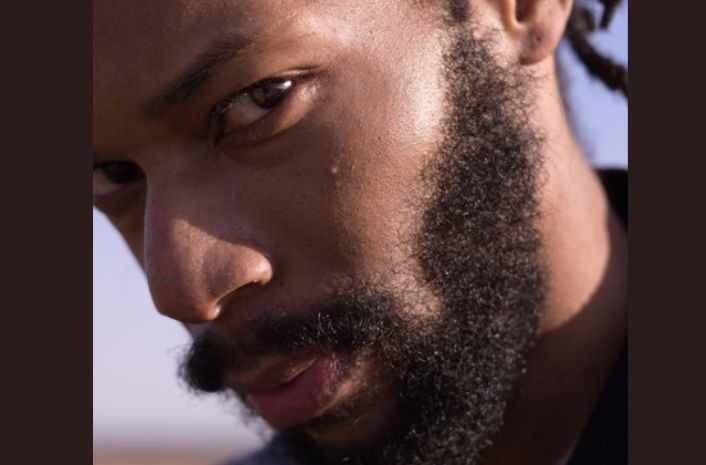
Facial hair growth depends on several factors: genetics, hormones, and lifestyle.
If you’ve ever wondered why your beard grows the way it does, or why it doesn’t, these elements hold the answers.
Genetics
Your DNA determines how thick, dark, or patchy your beard will be.
If the men in your family have full beards, you’re more likely to grow one too.
If they struggle with sparse or slow growth, you might see similar patterns.
Hormones
Testosterone and its byproduct, DHT (dihydrotestosterone), control beard development. Higher levels usually mean thicker, faster growth.
Puberty kickstarts the process, but changes in hormone levels throughout life can affect how your facial hair grows.
If you have low testosterone, your beard may grow slowly or unevenly.
Lifestyle
What you eat, how you care for your skin, and even your stress levels impact beard growth.
Protein, biotin, and vitamins like A, B, C, and E strengthen hair follicles.
Regular grooming and exfoliation keep your skin healthy, creating a better environment for growth.
On the other hand, lack of sleep, stress, and poor nutrition can weaken hair and slow down growth.
Related Posts
Grooming Hacks Every Gentleman Should Master
Lightweight beard oils for sensitive skin and patchiness
10 Best Hair Grooming Tools Every Man Should Own
How to Care for and Maintain Full Beards
Benefits of Growing Facial Hair and Beards
- Adds Confidence: A well-groomed beard enhances your appearance, giving you a more masculine, mature, and self-assured look.
- Protects Skin: Facial hair acts as a natural barrier, protecting your skin from harmful UV rays and environmental pollutants.
- Improves Facial Structure: Beards can define your jawline, adding angles and shape to your face, making it appear more chiseled.
- Warms the Face: Facial hair helps keep your face warm during colder months, acting as a shield against wind and cold.
- Reduces Acne: A beard prevents direct friction from clothing, reducing skin irritation and lowering the chances of acne breakouts.
- Saves Time: Growing facial hair eliminates the need for regular shaving, saving you time and effort in your grooming routine.
- Promotes Skin Health: Beards can reduce irritation and razor burn, while also moisturizing your skin by trapping natural oils.
- Offers Variety: Facial hair allows for diverse styling options, from beards to mustaches, giving you the freedom to change your look.
- Matured Appearance: A beard can make you look older, adding a sense of maturity and gravitas to your overall image.
- Increases Attractiveness: Many find facial hair appealing, as it can give off an air of masculinity, sophistication, and ruggedness.
Types of Facial Hair
Beard Styles
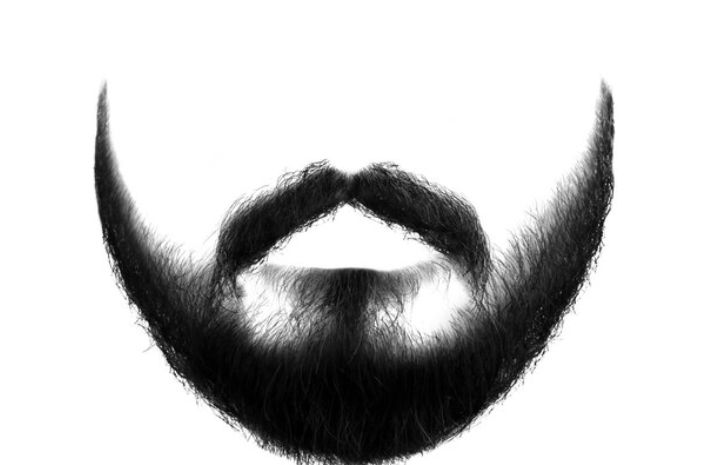
Beards are the most classic and adaptable form of facial hair. Whether short and neat or long and full, they define your face and add character.
A well-maintained beard can enhance your jawline, balance facial proportions, and create a distinct personal style.
But growing a great beard isn’t just about letting it grow wild; it takes regular grooming, trimming, and care to keep it looking sharp.
The right beard style depends on your face shape, hair growth pattern, and how much time you’re willing to invest in upkeep.
Paired with a mustache or styled on its own, a beard is more than just hair; it’s a statement.
- Full Beard: The full beard covers the jawline, chin, and cheeks, often paired with a mustache, creating a bold, masculine look.
- Short Beard: A neatly trimmed version of a full beard, offering a refined, professional appearance that suits most face shapes.
- Long Beard: Extends beyond the chin, requiring daily grooming to prevent tangling and maintain a clean, structured shape.
- Stubble: Light facial hair growth that adds definition and rugged appeal without the commitment of a full beard.
- Corporate Beard: A precisely shaped, well-groomed beard that looks polished and professional in business and formal settings.
Goatee Styles
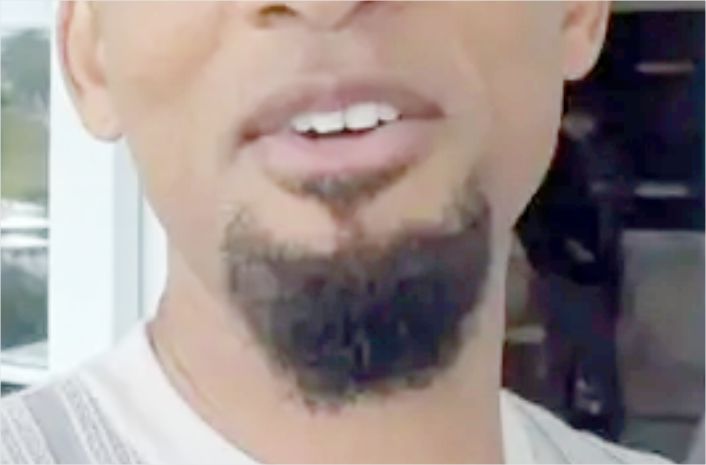
A goatee focuses on the chin, giving your face a sharp, sculpted appearance. If you like facial hair but don’t want a full beard, a goatee offers a sleek, manageable alternative.
It enhances your jawline and can make your face look longer or more defined, depending on the style.
Keeping a goatee sharp means regular shaving around it to maintain clean edges.
Whether you choose a classic or modern twist, a goatee lets you experiment with your look without overwhelming your face.
- Classic Goatee: A small patch of chin hair with a clean-shaven face, offering a simple, structured appearance.
- Full Goatee: Connects a mustache to a chin beard, creating a defined, stylish facial hair look.
- Van Dyke: A disconnected mustache and goatee combo that delivers a bold, vintage-inspired style.
- Anchor Beard: A pointed goatee extending along the jawline, resembling an anchor, for a sharp, edgy look.
Mustache Styles
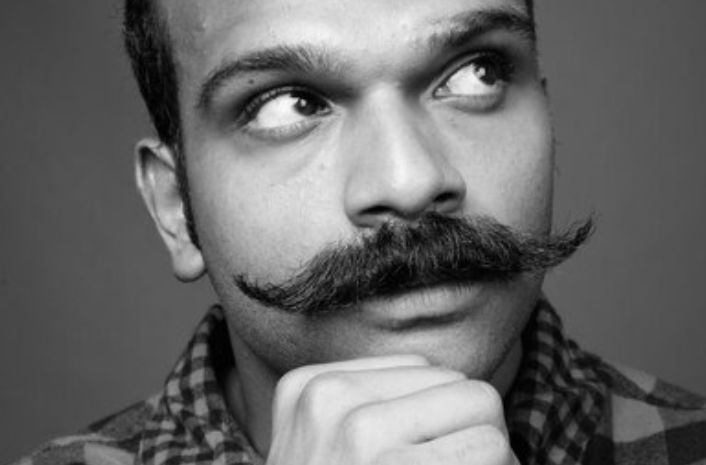
A mustache sits right above your upper lip and can change your look instantly. From thick and
commanding to sleek and understated, it’s a facial hair style that draws attention. Mustaches work well alone or alongside beards or goatees for a more customized look.
Grooming is key, regular trimming, shaping, and occasional waxing keep it neat and intentional.
The right mustache can give you a classic, rugged, or sophisticated look, depending on your choice.
- Chevron: Thick, full mustache that covers the upper lip, giving a strong, traditional look.
- Handlebar: Extended mustache with curled ends, adding a touch of vintage flair.
- Horseshoe: Grows downward past the mouth corners, forming an upside-down U-shape often linked to biker culture.
- Pencil Mustache: A thin, neatly trimmed mustache following the upper lip’s contour for a sleek, refined appearance.
Sideburn Styles
Sideburns frame your face, connecting your hairline to your jaw and adding structure to your look.
Whether you keep them short and subtle or long and bold, sideburns can complement your hairstyle and facial features.
They’re easy to maintain but require trimming to prevent an uneven or messy appearance.
Sideburns pair well with beards or mustaches, but they also stand strong on their own.
- Mutton Chops: Thick sideburns extending down the cheeks, often with a clean-shaven chin for a bold statement.
- Friendly Mutton Chops: Connects mutton chops to a mustache, creating a fuller, more dramatic style.
- Sideburns Only: Well-groomed hair along the sides of the face without connecting to the chin or mustache, offering a neat, defined look.
Chin-Focused Styles
Chin-focused styles emphasize the lower part of your face, sharpening your jawline and adding structure without overwhelming your look.
They work well for men who want facial hair but prefer a minimalist approach. Whether worn alone or paired with a mustache, chin styles offer an easy-to-maintain, polished look.
Regular trimming ensures clean lines and prevents an unkempt appearance.
- Soul Patch: A small patch of hair below the lower lip, adding a subtle but stylish touch.
- Chin Strap: A thin strip of hair running along the jawline and chin, creating a well-defined outline.
- Balbo: A disconnected mustache and goatee combination that delivers a sharp, stylish appearance without the bulk of a full beard.
Van Dyke

The Van Dyke combines a pointed goatee with a mustache, leaving the cheeks clean-shaven.
Named after the Flemish painter Anthony van Dyck, this style gives a sharp, sophisticated look. It’s a refined choice for those who want a more artistic appearance.
The pointed goatee helps elongate and define the jawline, making it a great option for round or square faces.
Regular maintenance is necessary to keep the lines crisp and prevent the look from blending into the surrounding beard.
This style adds a touch of elegance, making it ideal for both formal and casual settings.
Related: Beard Oils Guide
Choosing the Right Facial Hair Style for Your Face Shape
Your facial hair can really change your look, but picking the right style depends on the shape of your face.
Different face shapes, round, square, oval, and heart, have traits that can be balanced or highlighted with specific facial hair styles.
Here’s how to match your beard, mustache, or stubble to your face shape:
Round Face Shape
If you have a round face, the goal is to make it appear longer. A full beard with tight sides and longer hair at the chin helps achieve this effect.
A goatee can also add length and definition. Stay away from wide mustaches, as they’ll make your face look rounder.
Square Face Shape
For square faces with a strong jawline, softer facial hair styles can create balance.
A full beard with rounded edges or a short, well-groomed stubble will help soften the sharp angles. This gives a more approachable and balanced look.
Oval Face Shape
Oval faces are the most adaptable, so you can experiment with a variety of styles. Full beards, goatees, or even a well-defined mustache with sideburns work well.
The key is keeping proportions balanced to enhance the natural symmetry of your face.
Heart-Shaped Face
For heart-shaped faces, you want to add width around the chin area. A full beard or a short, bushy goatee can help balance the upper face.
A handlebar mustache is another great option, drawing attention to the upper face while complementing the chin.
Consider Your Growth Pattern and Maintenance
When picking a style, keep in mind your beard’s growth pattern and how much maintenance you’re willing to do.
Choose a look that matches both your face shape and how much effort you’re ready to put into grooming.
With the right choice, your facial hair can complement your features and boost your confidence.
Different Types of Beards
Your beard says a lot about you. Whether you prefer a short, clean look or a bold, statement-making style, there’s a beard type that suits your face and lifestyle. Here’s a breakdown of the most popular options:
Short Beards: Clean and Low Maintenance
- Stubble: A few days of growth creates a rugged yet polished look that suits most face shapes. It’s easy to maintain with regular trimming and works well for those who prefer minimal effort.
- Goatee: A small, chin-focused beard, sometimes paired with a mustache. It sharpens your jawline and suits those with patchy cheek growth, offering a sleek and stylish look with minimal upkeep.
Medium-Length Beards: Balanced and Stylish
- Van Dyke: A combination of a pointed goatee and a disconnected mustache. It adds a sharp, artistic touch, ideal for those who want a unique and sophisticated facial hair style.
- Mutton Chops: Thick facial hair along the cheeks connected to a mustache while leaving the chin bare. This vintage-inspired look stands out and requires regular shaping to maintain its bold, structured form.
Long Beards: Bold and Timeless
- Viking Beard: A full, bushy beard that conveys strength and masculinity. Inspired by Norse warriors, this style requires patience, proper grooming, and beard oil to prevent dryness and maintain a healthy, thick appearance.
- Wizard Beard: A long, flowing beard that extends well past the chest, creating a wise, mythical look. Regular brushing, conditioning, and trimming are necessary to prevent tangles and maintain a well-groomed shape.
Classic Styles: Timeless and Versatile
- Full Beard: Covers the jaw, chin, and upper lip, offering a strong, masculine appearance. It requires consistent maintenance with trimming, combing, and conditioning to keep it well-shaped and free from split ends.
- Anchor Beard: A sharply defined chin beard that connects to a mustache, resembling a ship’s anchor. This style enhances your facial structure and works well for those with narrow or angular faces.
Choosing the right beard depends on your face shape, hair growth pattern, and lifestyle. If you’re unsure, explore in-depth guides on beard styles and grooming techniques to find the perfect fit.
Shaving and Transitioning Between Styles
Shaving plays a big role in maintaining your facial hair, especially when you want to change your style.
Whether you’re switching from a full beard to a clean shave or trimming your mustache, using the right techniques makes the process smoother and minimizes discomfort.
- Start with Exfoliation: Exfoliate your skin to remove dead skin cells and prevent ingrown hairs. You can use a gentle scrub or a soft washcloth to refresh your face.
- Hydrate Your Beard: Before you shave, use warm water or a towel on your face for a few minutes. This softens the hair, making the shaving process easier.
- Choose the Right Tools: If you have sensitive skin, go for razors with multiple blades. An adjustable safety razor can be great since it lets you control the blade exposure, providing a closer and more comfortable shave.
- Use the Right Shaving Cream: Select a shaving cream made for sensitive skin. Look for hypoallergenic options with ingredients like aloe vera or shea butter to soothe your skin. Applying enough cream helps reduce friction and ensures a smooth shave.
- Gradual Transition: If you’re switching from a beard to a clean shave, avoid rushing. Trim your beard bit by bit instead of removing it all at once. This gives your skin time to adjust.
- Aftercare Matters: Once you’ve finished shaving, use a fragrance-free aftershave balm to calm and moisturize your skin. It helps prevent irritation and leaves your face feeling fresh.
By following these steps, you can transition between facial hair styles smoothly while avoiding common shaving issues like razor burn or irritation.
Beard Care and Maintenance
Taking care of your beard is key to making sure it looks thick and healthy. The right grooming habits and lifestyle choices will help your beard grow strong and full. Here’s how you can keep it in top shape:
Nourish from the Inside
A healthy beard starts with what you eat. A balanced diet full of vitamins and minerals supports hair growth.
Foods rich in omega-3 fatty acids, like salmon and walnuts, along with leafy greens, eggs, and whole grains, promote stronger hair.
Regular exercise also boosts circulation, helping nutrients reach your hair follicles. If you’re not getting enough vitamins, supplements like biotin and zinc can help too.
Build a Solid Grooming Routine
Washing your beard is the first step in keeping it clean and healthy. Use a mild beard shampoo to remove dirt and buildup without stripping natural oils.
After washing, moisturize with beard oil to hydrate both the hair and skin, helping prevent dryness and promoting softness.
For added hold and moisture, beard balm works great, especially for styling.
Trim and Style Regularly
Decide whether you want to trim your beard yourself or visit a professional. DIY trimming can help you personalize your look, but it’s easy to make mistakes without experience.
If you choose to go the DIY route, make sure you use the right tools. Regularly brushing your beard with a boar bristle brush can help distribute natural oils, reduce itchiness, and prevent dandruff.
Address Common Beard Issues
Trim split ends regularly to keep your beard looking neat and healthy. Use beard care products that suit your hair type to keep your beard soft and manageable.
Consistent grooming can help prevent common issues like dryness, irritation, and uneven growth.
Beard and Facial Hair Trends Around the World
Facial hair isn’t just about appearance; it’s deeply embedded in cultural history and tradition.
Different regions have unique attitudes toward beards and mustaches, often linked to masculinity, wisdom, and social standing.
Let’s explore how trends vary across the globe and how they reflect personal and cultural identity.
Cultural Significance of Beards
In many cultures, a beard is more than just facial hair. For example, in the Middle East, a well-groomed beard is a symbol of authority and maturity.
It connects to deep-rooted traditions and is often seen as a sign of respect and wisdom.
On the other hand, in Western cultures, a clean-shaven look was traditionally associated with professionalism and social norms, but that perception is changing.
Modern Trends: Hipster Influence
The rise of the “hipster” movement has revived interest in fuller, more carefully groomed beards.
These styles, often big and bold, reflect personal expression and individuality. It’s about embracing uniqueness and moving away from traditional expectations.
Beards today are a way for men to stand out, showcasing their style through meticulous grooming and the use of specialized products.
Beard Styles Across Cultures
Around the world, different countries and religions have specific styles that hold cultural significance.
In India, Sikh men proudly sport long beards as part of their faith, representing a commitment to tradition and religion.
Meanwhile, in Japan, historical facial hair styles, such as the goatee, are making a comeback with a modern twist, blending old-school looks with current trends.
Social Media and Influencer Impact
With the rise of social media, trends spread faster than ever. Influencers and grooming experts on platforms like Instagram and YouTube are showcasing new beard styles and techniques that go viral.
These platforms have given birth to countless unique styles, inspiring men worldwide to experiment with their facial hair.
Facial hair continues to evolve. It’s no longer just about following tradition or conforming to trends, it’s about making a statement.
Whether rooted in culture or driven by personal preference, the diverse world of facial hair reflects who we are and where we come from.
Common Beard Problems and How to Fix Them
Growing a beard comes with challenges, but knowing how to handle them makes all the difference.
Here’s how to tackle beard dandruff, itchiness, and patchy growth so you can keep your beard looking its best.
1. Beard Dandruff: Get Rid of the Flakes
Dry, flaky skin under your beard can be frustrating and embarrassing. This happens when your skin lacks moisture, leading to visible white flakes.
Fix It:
- Wash with a Beard Shampoo: Regular shampoo strips away natural oils, making dryness worse. Use a beard-specific wash 2–3 times a week to clean your beard without over-drying.
- Hydrate with Beard Oil: Apply a few drops daily to keep both your hair and skin moisturized. Look for oils with jojoba or argan oil for deep hydration.
- Brush to Exfoliate: A boar bristle brush removes dead skin and evenly distributes oil, preventing dandruff buildup.
2. Beard Itch: Stop the Irritation
Itchiness is common, especially in the early growth stages. As new hairs push through the skin, they can cause discomfort. Dryness and trapped bacteria can also make itching worse.
Fix It:
- Moisturize Daily: Beard oil or balm soothes irritation and softens new growth.
- Brush Gently: A soft-bristle brush helps spread natural oils while reducing itch.
- Rinse Well After Washing: Leftover shampoo or soap residue can dry out your skin, making the itch worse.
3. Patchy Beard Growth: Fill in the Gaps
Uneven growth can make your beard look thin in certain areas. Genetics, hormones, and diet all play a role in how full your beard gets.
Fix It:
- Give It Time: Some areas take longer to fill in. Avoid trimming too soon, let it grow for at least three months before deciding on a style.
- Try Minoxidil: Some men see results using minoxidil (Rogaine), a treatment that stimulates hair growth.
- Eat for Growth: Protein, biotin, and vitamins like B12 and D3 help strengthen hair follicles.
- Train Your Beard: Brushing in one direction can help guide hair growth over time.
Does Your Beard Have These Problems? Try This Challenge!
- Week 1: Start using a beard shampoo and oil daily.
- Week 2: Add brushing to your routine.
- Week 3: Track your beard’s progress—take pictures and compare.
- Week 4: Adjust your grooming routine based on what works best.
A great beard takes patience and care. Stick with the right routine, and you’ll see improvements in both look and feel.
Frequently Asked Questions
How do I know which beard style suits my face shape?
Consider your face shape: round faces benefit from longer beards, while square faces suit softer, rounded styles.
How can I promote faster facial hair growth?
Ensure a healthy diet rich in protein, biotin, and vitamins. Also, maintain proper skincare and manage stress.
What’s the best way to maintain a well-groomed beard?
Trim regularly, clean with beard shampoo, and use beard oils to keep hair soft and hydrated.
What beard style is best for a square face?
A rounded beard or well-groomed stubble softens angular features, creating balance and a more approachable appearance.
Can I wear a beard with a heart-shaped face?
Yes! A full beard or bushy goatee adds width around the chin, balancing the narrower lower face.
Conclusion
Your facial hair and beard are more than just facial hair, it’s a reflection of your personality and style.
Whether you’re just starting or have been grooming for years, every stage of the journey matters.
If you’re growing a beard for the first time, patience is key. The early stages can be itchy and uneven, but with proper care, your beard will take shape.
Find a routine that works for you, from washing and moisturizing to trimming and shaping.
If you’ve had a beard for a while, staying consistent with grooming keeps it looking sharp.
Styles change, and so do beard trends, but healthy, well-maintained facial hair always stands out.
No matter the length or style, your beard tells a story. Own it, take care of it, and wear it with confidence. What do your facial hair and beard say about you?
Pyo Merez is a men’s lifestyle enthusiast and writer about the gentleman’s place and impact on society. Raised by a distinguished gentleman dad, he offers unique insights into how the mind of a gentleman works and how societal norms shape gentlemen’s identity and vice versa.
Through his insightful articles, Pyo taps into the depths of gentleman culture to provide perspectives on etiquette and manners in modern society.

